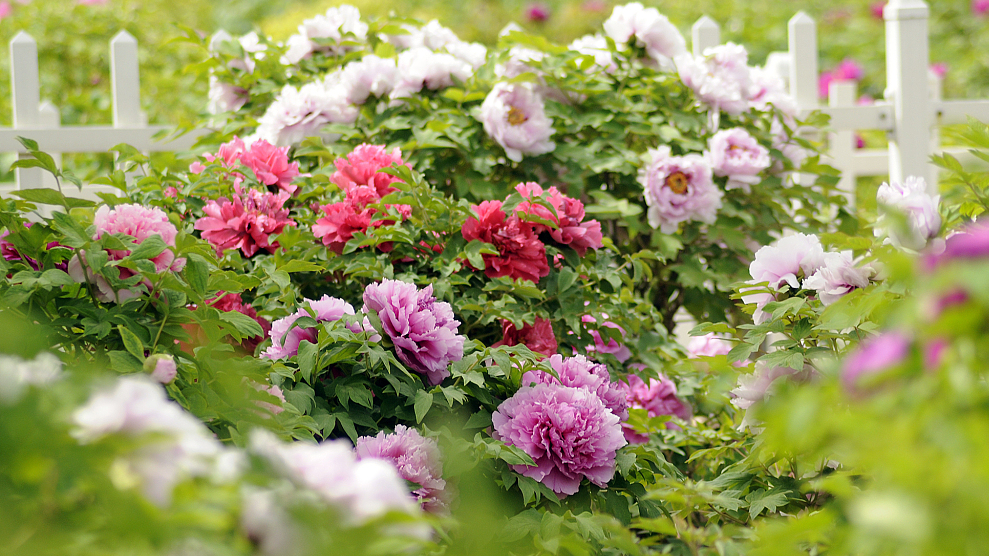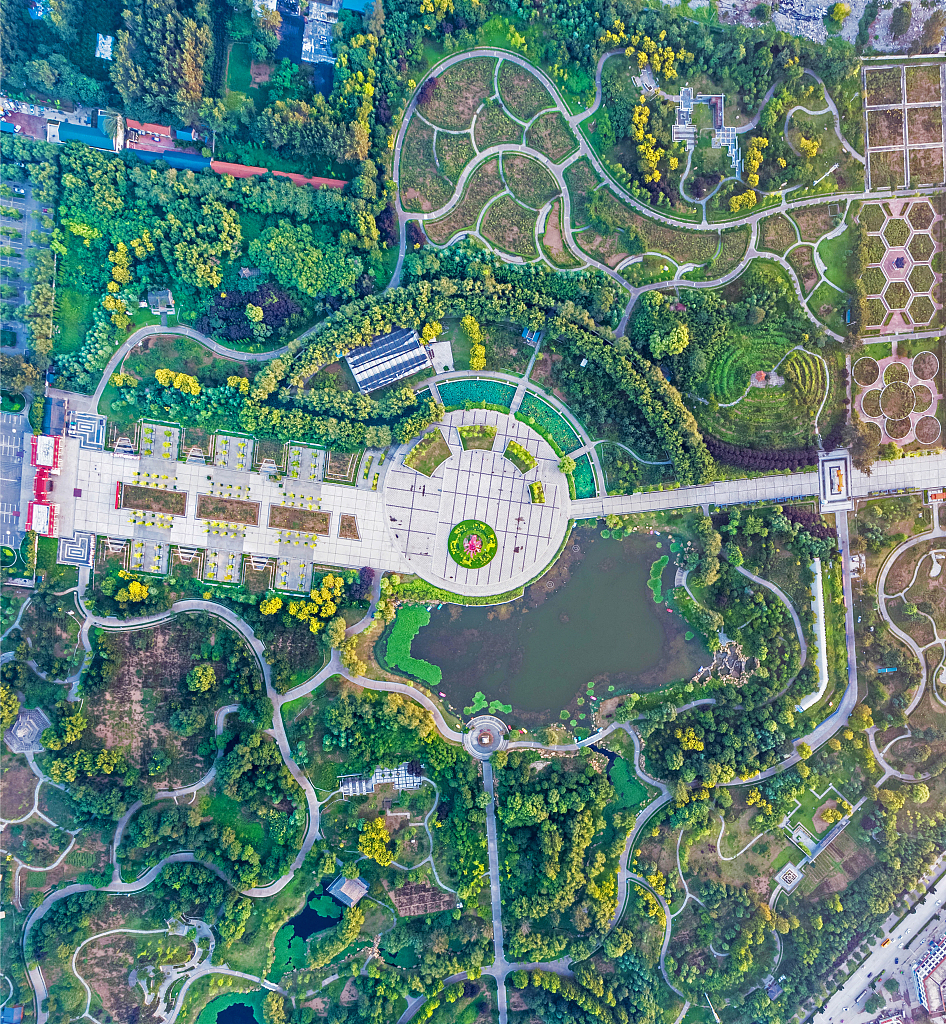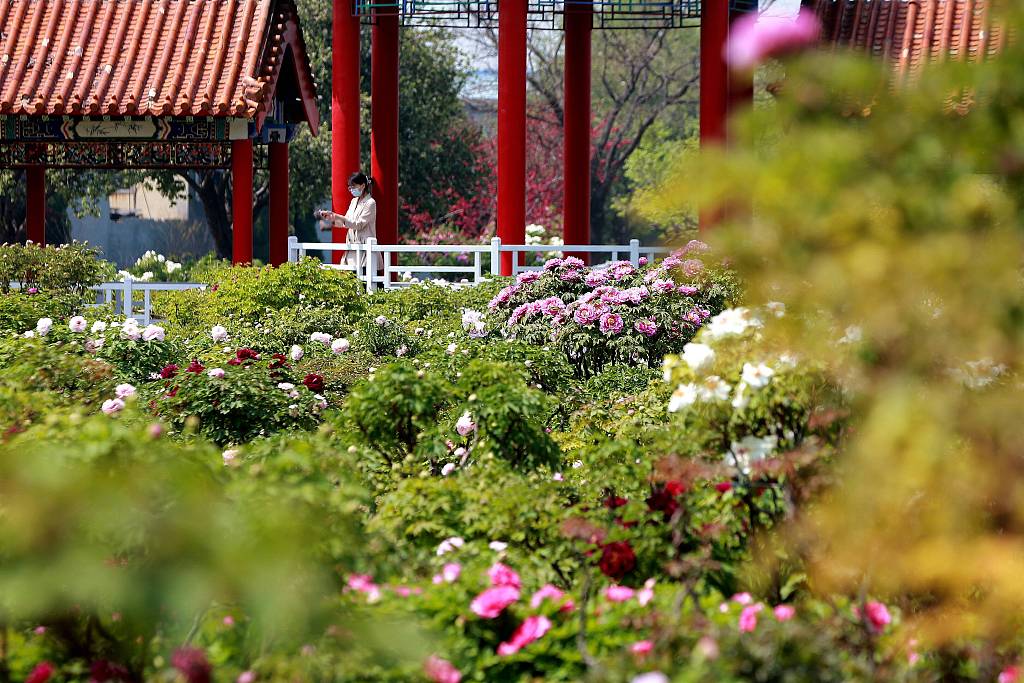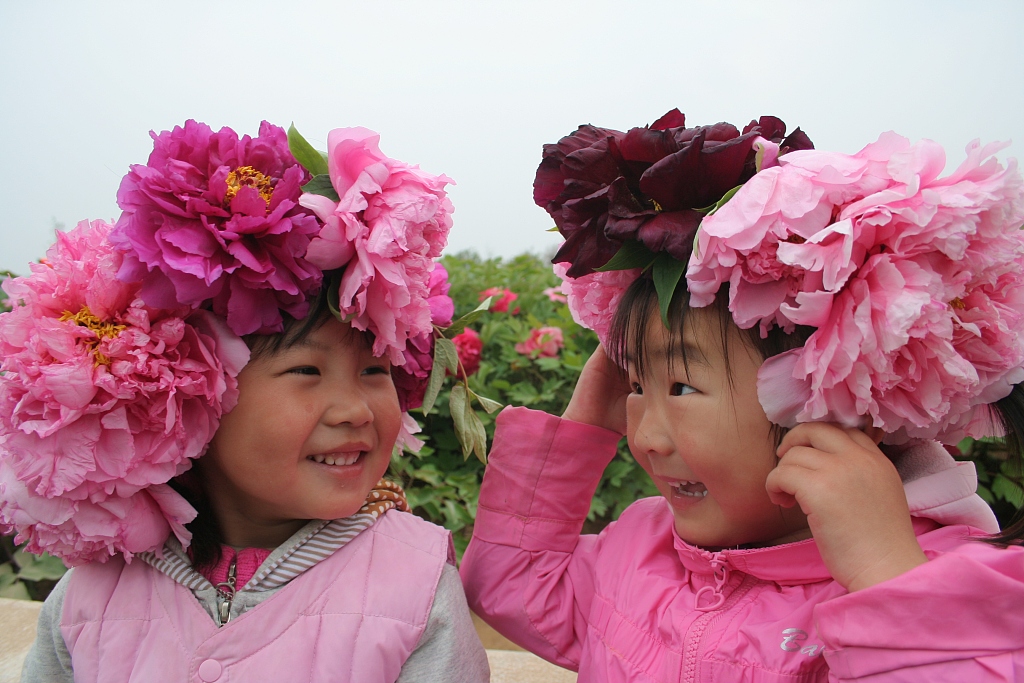
Peony flowers in Heze, Shandong Province have entered into full bloom. /CFP
Peony flowers in Heze, Shandong Province have entered into full bloom. /CFP
The 2023 Heze Peony Festival officially lifted its curtains on Saturday in Heze, China's Shandong Province.
Formerly known as Caozhou, Heze has long been renowned for producing peonies for centuries. During the Ming (1368-1644) and Qing (1644-1911) dynasties, more than a dozen peony gardens were cultivated and developed, creating the abundance of varieties found there today.
During the peony blooming season in Heze, the sensory feast of peony flowers attracts flocks of tourists from across the country. Among the various peony gardens, the most representative peony viewing spots are the Caozhou Peony Garden, Baihua Garden and Gujin Garden. Each garden has its own unique features, showcasing different peony varieties and spectacular floral displays, which entice countless visitors to come and appreciate their beauty every year.

Caozhou Peony Garden is a must-visit destination in Heze, boasting the largest area and most varieties of peony plants among all the peony gardens in the area. /CFP
Caozhou Peony Garden is a must-visit destination in Heze, boasting the largest area and most varieties of peony plants among all the peony gardens in the area. /CFP
Caozhou Peony Garden
Caozhou Peony Garden is a must-visit destination in Heze, boasting the largest area and most varieties of peony plants among all the peony gardens in the area. It is also a national AAAA level tourist attraction with numerous scenic spots and activities.
It covers an area of 1.06 million square meters and is home to 1,237 peony varieties and a total of 800,000 plants, including over 600 varieties of peonies and more than 200 other types of peonies, shrubs and ground cover plants. As the plant garden with the largest planting area and most varieties of peony in the world, the scenery here is truly spectacular and definitely worth a visit.
The south of the garden is home to the only peony-themed museum in China, while the north houses the only greenhouse in the country where peonies can be appreciated all year round.

The Baihua Garden created during the Ming Dynasty is known as the ‘Peony Treasure Garden’ due to the number of extremely valuable peony varieties grown in the area. /CFP
The Baihua Garden created during the Ming Dynasty is known as the ‘Peony Treasure Garden’ due to the number of extremely valuable peony varieties grown in the area. /CFP
Baihua Garden
If you want to see rare and precious peonies, Baihua Garden is the top choice. Created during the Ming Dynasty, it is known as the “Peony Treasure Garden” due to the number of extremely valuable peony varieties grown in the area.
The garden contains many precious peony plants that are over a hundred years old and have experienced the vicissitudes of time, and contain many legendary stories. The most famous one is the white peony, which was cultivated in 1610 in the family garden of He Yingrui, an imperial official who passed the highest imperial examination in 1598.
This peony, which stands at over 3.3 meters tall and has a canopy spanning 5 meters, can produce over 400 flowers each year. It is the largest and oldest peony tree in China and is known as the “Peony King” by visitors who travel there to see it.

Children wear peony flower crowns at Caozhou Peony Garden, Heze, Shandong. /CFP
Children wear peony flower crowns at Caozhou Peony Garden, Heze, Shandong. /CFP
Gujin Garden
In addition to these two viewing spots, Gujin Garden is another popular destination for peony lovers. The garden has a rich history dating back more than 500 years, having evolved from a garden created during the Ming Dynasty in Caozhou. Its most distinctive feature is its collection of more than ten tall-stemmed peony trees.
These tall-stemmed peonies were formed by grafting over ten peony plants that had been growing for more than ten years onto the same old trunk of a peony tree, which was achieved through extensive research and practice over time.
In 2005, these tall-stemmed peonies bloomed for the first time, stunning peony enthusiasts and experts nationwide. As there are ten different colors of flowers on one peony, it was named the “Ten-colored Brocade.” It is said that the flowering period of this peony has been extended from the original seven days to thirty days.